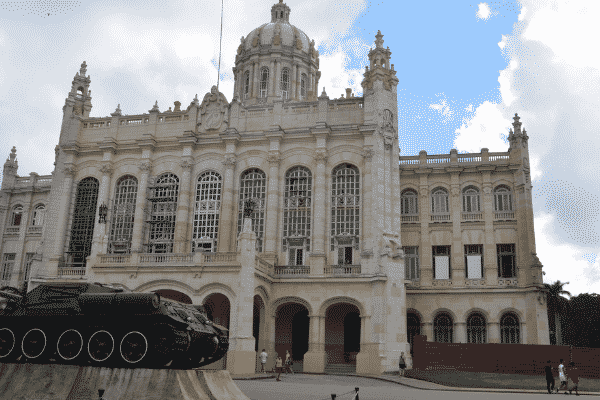For an avid traveller, visiting a museum or an art gallery ranks high in the itinerary when exploring a destination. Worldwide there are quite a few of them classified by guidebooks as ‘must-visit’ even if one is not a serious art aficionado or history buff.
Musée du Louvre Paris, Prado Madrid, Vatican Museums Vatican City, Uffizi Gallery Florence, British Museum London, Hermitage Museum St Petersburg and Egyptian Museum Cairo are some of the most visited ones from that exclusive list.
However from my travel to more than a hundred counties around the world, I have had the opportunity to visit some other museums which are relatively less well-known. They are not as sprawling as the celebrated ones in terms of the number and variety of exhibits, but all of them treasure something unique, fascinating and of great significance to the history of human civilisation.
Here’s a list of ten such institutions worth knowing about, and when opportunity strikes, worth visiting. (In the meantime, check out if they have virtual tours).
National Museum Addis Ababa, Ethiopia
This museum’s greatest treasure is a partial skeleton of a tiny female body, estimated by archaeologists to be 3.2 million years old. After discovering her from archaeological ruins in 1974, she was named Lucy and became well known as the world’s earliest human.

Apartheid Museum Johannesburg, South Africa
Located in impoverished Soweto, the home for Johannesburg’s black population during the white regime, this seven-hectare site presents numerous film footages, photographs and text panels to showcase the saga of a state-sanctioned system based solely on racial discrimination.
It’s a great place to learn more about Nelson Mandela and pick up information on widely publicised incidents during the apartheid, such as the Sharpeville firing in 1959 that triggered banning of political parties like African National Congress, or the death of 12-year-old Hector Pieterson in 1976 when police opened fire on a protesting crowd in Soweto.

Museo del Oro Bogota, Colombia
Often referred as the Gold Museum, this is the largest repository of pre-Hispanic gold work in the whole world. There are over 34,000 gold pieces each of which has its own incomparable beauty and historic value. Many of these items were used in daily life or sacred rituals of indigenous peoples.
Star exhibit is Muisca Raft, which portrays the ritual that inspired the famous legend of El Dorado. Made of high-grade gold, it’s believed to be crafted around 1500 years before Christ.

Biomuseo Panama City, Panama
Housed in a fancy colourful building designed by the world renowned architect Frank Gehry, this museum of a different kind tells amazing stories of geology, life on earth and its ecosystems.
Most importantly it explains how the isthmus connecting North and South America emerged from the sea millions of years ago as a result of tectonic forces inside our planet. This isthmus is Central America and Panama nestles towards its southern end.

Museo de la Revolucion Havana, Cuba
Housed inside Spanish dictator Batista’s opulent palace, the collections – mostly photos and documents – reveal a captivating story of the Fidel Castro’s liberation of Cuba from centuries of colonial rule.
The iconic exhibit here is ‘Granma’ the yacht that carried Fidel and his 81 comrades from exile in Mexico to Cuba in 1956. The bullet marks around the main stairway of the ornate building proclaim something fiery happened here once.

National Palace Museum Taipei, Taiwan
The collections here are a treasure trove of Chinese imperial art from the Neolithic age to the Qing dynasty that ruled China from almost three hundred years until early 20th century.
They were brought into Taiwan from mainland China in 1949 by exiled Chinese leader Chiang Kai-shek in 10,000 boxes, and included works of calligraphy, ornaments, potteries, sculptures and rare books.

War Remnants Museum Ho Chi Minh City, Vietnam
The exhibits here – distressing documents and photographs showing the torture and killing of Viet Cong supporters and even civilians – illustrate the agony of the Vietnam War.
The photograph of the 1968 My Lai Massacre when US army killed hundreds of Vietnamese civilians in My Lai village still provoke outrage among viewers. Perhaps the most awful sight is of preserved human foetuses, deformed because of the use of chemical warfare.

Salar Jung Museum Hyderabad, India
Established in 1951, this museum boasts a large ensemble of rare antique pieces from all over the world collected by the princely Salar Jung family. Numbering over 100,000 the artefacts here – paintings, sculptures, manuscripts and books – represent mirrors of the past from 2nd century B.C to early 20th century.
A star exhibit is the ‘Veiled Rebecca’ – a marble sculpture of a lady wrapped in a transparent veil and standing in an alluring manner.

Asian Civilisation Museum Singapore City, Singapore
This is the nation’s largest and most spectacular enlightening icon, comprising of 10 thematic galleries where over 1300 artefacts, present 5,000 years of Asian cultures from South Asia, Southeast Asia, West Asia and China.

National Museum Tehran, Iran
Arranged in chronological order, the ensemble of exhibits here in the pariah nation’s capital provides a fair knowledge about the land which since its foundation in the BC period has passed through phases of imperialism, foreign invasion, religious wars and revolution until entering the current Islamic era founded in 1979 by Ayatollah Khomeini.

READ ALSO: The best of Oz
Link up with us!
Indian Link News website: Save our website as a bookmark
Indian Link E-Newsletter: Subscribe to our weekly e-newsletter
Indian Link Newspaper: Click here to read our e-paper
Indian Link app: Download our app from Apple’s App Store or Google Play and subscribe to the alerts
Facebook: facebook.com/IndianLinkAustralia
Twitter: @indian_link
Instagram: @indianlink
LinkedIn: linkedin.com/IndianLinkMediaGroup



